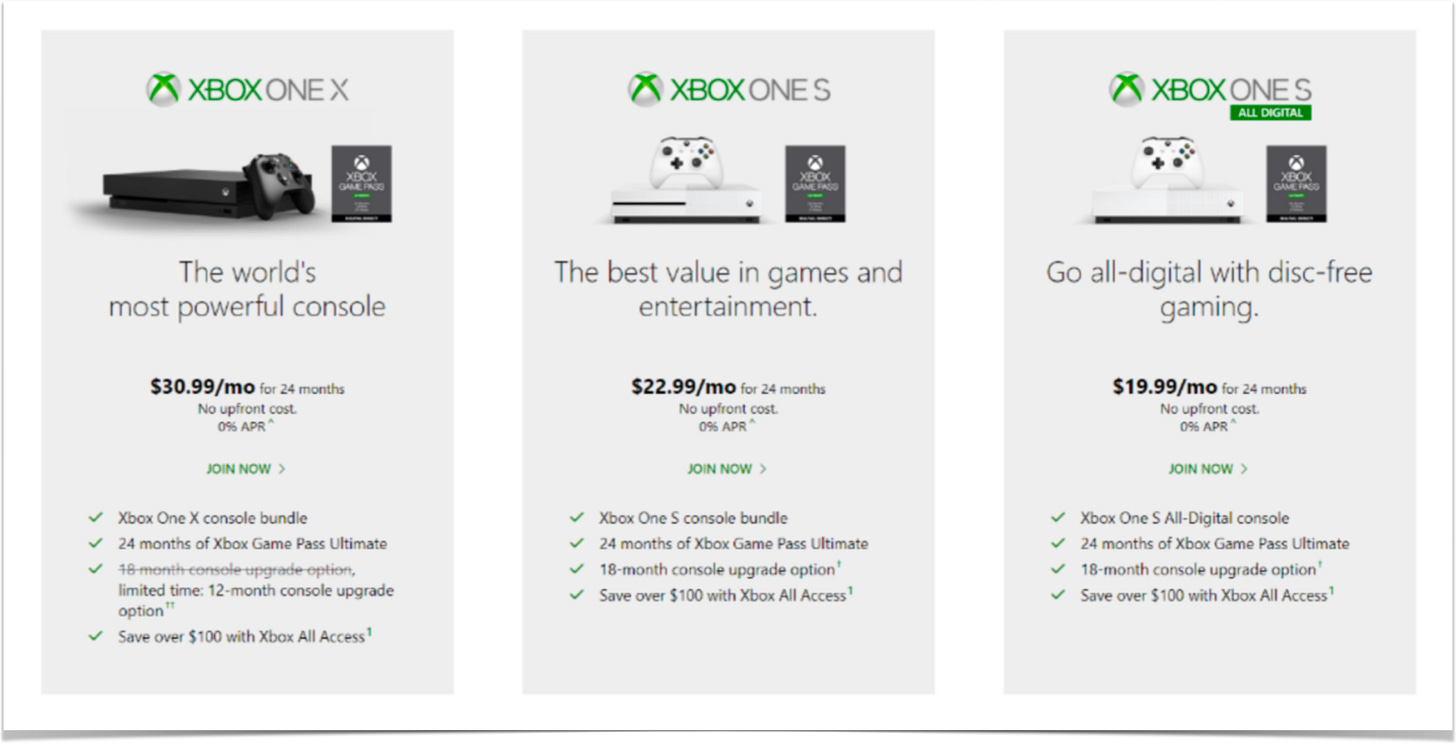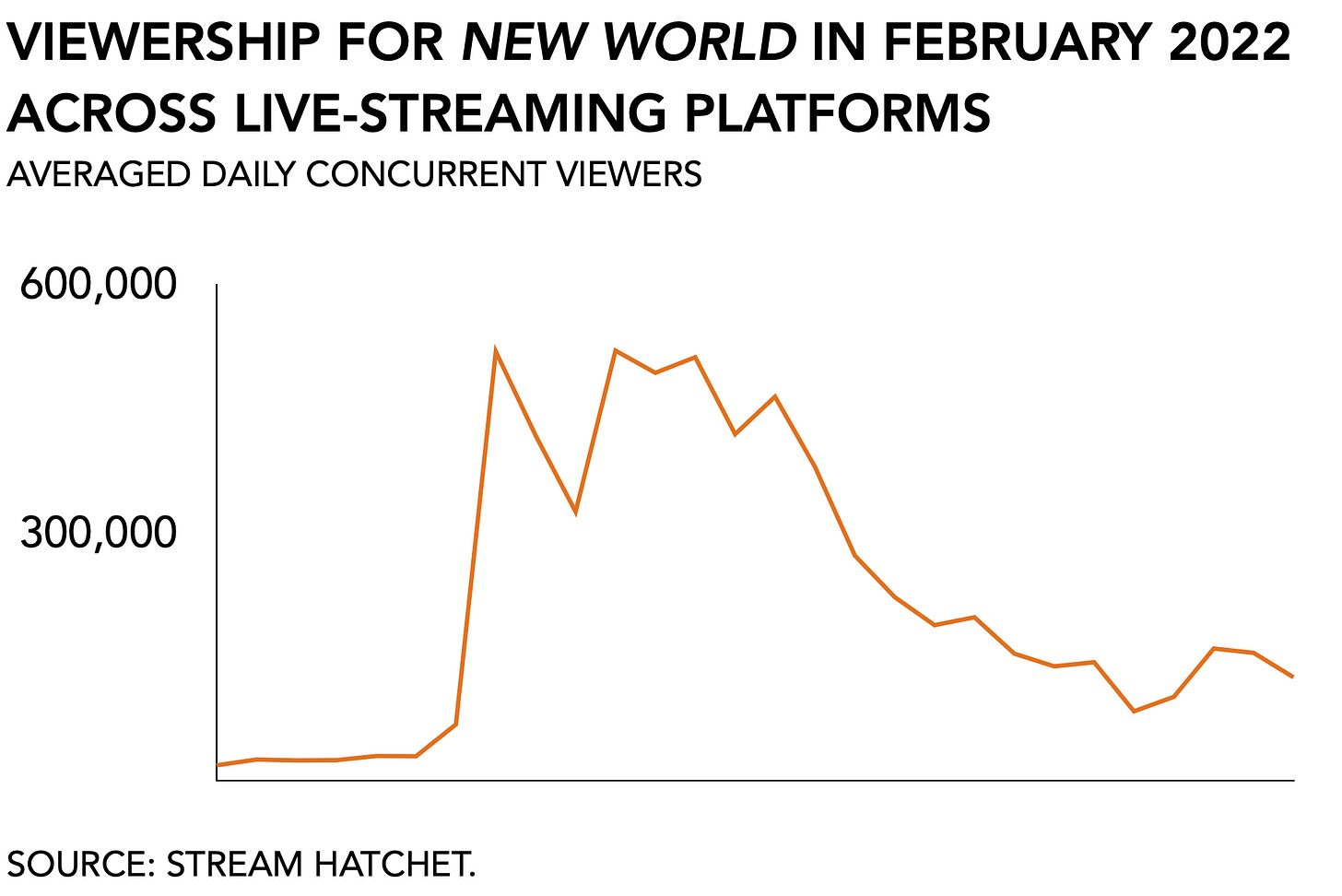Usually, big companies have the decency to refrain from making big announcements immediately after a major industry event.
No such luck this year.
This week’s biggest story is Sony’s reveal of its gaming subscription service (see Big Read below).
The offering is neither revolutionary nor unexpected. But it does re-establish the tried and true narrative of two big entities going mano-a-mano while we watch and benefit. Think Rolling Stones versus the Beatles. Or Oasis versus Blur, if you must. Or Star Wars versus Star Trek. Coke versus Pepsi.
For consumers, it means that we’re headed into an absolute deluge of digital content. Between Steam grinding out hundreds and thousands of titles each year, Stadia asking for my attention, Luna trying its best to bulk up, Netflix launching pretty mobile games and buying more studios, and, of course, Game Pass, I’m completely overwhelmed. Realistically, there is an infinitesimally small chance that all of those games are worth my time.
But no matter. More is better, right?
I call it breadth of the mild.
On to this week’s update.
BIG READ: PlayStation's Game Pass
After hemorrhaging bits of news for months, Sony finally announced its game subscriptions. Succinctly, it plans to make three different packages available that range between $9.99 and $17.99, each offering a broader range of services and benefits.
Recurrent revenue is of particular interest to me because it is one of the now-viable revenue models in gaming. The key insight from analysts and observers is that we’re looking at Sony’s apparent move against competitor Microsoft’s Game Pass. Friendlies include Naavik’s insightful write-up, making the case that all roads lead to subscription, and Simon Careless’s GameDiscoveryCo newsletter calling it a reboot (congrats on hitting 10k subs btw!).
Because of their similarity in pricing, comparing Sony’s proposed PlayStation Plus Extra to Game Pass is an instinctual assessment. It implies that Sony is, in effect, reacting, to Microsoft’s recent success.
Yeah, I don’t think so.
What’s really driving the push for subscriptions are the changes occurring in the broader ecosystem. After a growth spurt during the pandemic, the economic outlook has started to change and industry leaders are looking to insulate themselves from the volatility that lies ahead.
First, it’s important to remember that Sony is a consumer electronics manufacturer. It makes physical boxes that need to be designed, built, distributed, and sold. That business has not gotten easier. Following the surge in demand for interactive entertainment, it is still virtually impossible to buy a PlayStation 5. Supply chains have been backed up for months. As a result, the cost of shipping has increased as has the cost of labor (think: truck drivers).
The shortage in chipsets is a second influence on Sony’s business. As one of the most costly components of its devices, the higher price point pushes down on margins. On Wednesday this week, Taiwan Semiconductor Manufacturing Co. (TSMC), the world's biggest contract chipmaker and a “barometer of global electronics demand,” announced that it cannot meet the demand for chipsets and that the cost of materials is rising sharply. In November last year, Sony announced a partnership with TSMC to build a new semiconductor plant but production is not expected to begin until 2024.
Third, now that looming inflation is starting to become a reality, consumer demand is unlikely to remain as strong as it has been. Video games, after all, are largely paid for with disposable income. Sure enough, the games industry will try and charge $70 for a new release. Try as they might, offering players a monthly subscription in exchange for access to a content buffet makes more sense in the context of rising consumer prices. If nothing else, it alleviates demand uncertainty and reduces the ups and downs of conventional releases.
The traditional economic model of console manufacturers has changed, too. It serves as a fourth macro-level trend that informs Sony’s subscription plans. I’ve written before about the Japanese firm’s remarkable accomplishment of breaking the cycle of running up debt immediately following the release of a new device by leaning harder into services revenue.
In its most recent earnings report, Sony PlayStation generated $2.8 billion in revenues from digital content, up +6% y/y, accounting for about half of the games division’s earnings and 13% of the Japanese giant’s total quarterly earnings.
It is not out of the question that Sony will eventually follow Apple’s plan to offer hardware subscriptions. During the end of the last console generation, Microsoft, in fact, saw some remarkable success with its three subscription tiers that included an Xbox One X or S, access to Game Pass Ultimate, and upgrades. (See, y’all forgot about that, but I didn’t.)
That type of offering has many benefits. Beyond catering to a wider audience, payment providers will offer competitive rates and assume the upfront costs, which further reduces a platform holder’s risk.
Understandably, content currently plays a major role in forecasting the long-term success of Sony’s announced subscriptions. The biggest IP commitments are Death Stranding, God of War, Marvel’s Spider-Man, Marvel’s Spider-Man: Miles Morales, Mortal Kombat 11, and Returnal. In his interview with Gamesindustry.biz, Sony Interactive Entertainment’s CEO, Jim Ryan, seemed somewhat evasive in answering questions about content.
The overall response so far, however, has been lukewarm. Much of the initial criticism argues that Sony isn’t planning to put enough premium content front and center in the new services.
“Whether it's indies, whether it's big games, or things that celebrate our heritage... all sorts of games. We are going to have all of it, and hopefully, a line-up that ticks all sorts of boxes.”
Of course, he simply cannot tell us everything just yet. In fact, expecting Sony to headline the announcement with a slew of both first- and third-party titles is naive, of course. Undoubtedly it is already in advanced negotiations with all of the major publishers. And let’s say they are going to add some of their biggest IP to the services for a fixed monthly fee. The moment the announcement goes out that, for example, Assassin’s Creed or Grand Theft Auto 5 will be part of the new subscriptions, players will stop buying copies of those games and wait for the service to go live. That would mean Sony has to compensate third-party game makers for the interim period from now until launch, which makes no sense. Similarly, Game Pass would only announce new titles a week or two prior to becoming available. Criticizing Sony for not immediately offering enough content is to miss the point.
One could, on the contrary, make the argument that Sony is offering too much content. Looking at the different tiers, the gravity point of its marketing effort is geared toward pitching its medium-level service, PlayStation Plus Extra, in a one-to-one comparison with Game Pass Ultimate. Equally priced at $14.99 a month, Sony’s version promises 400 titles compared to Microsoft’s “over 100” to create the illusion that it is four times better.
It isn’t. It’s just more.
Any discerning gamer will see right through the fact that Sony is loading up on bulk which means overall lower quality. That obviously exacerbates discovery issues. Scrolling through endless titles is a discouraging experience and even a more curated inventory like Game Pass is constantly at risk of overwhelming players.
Game Pass facilitates microtransactions and pushes considerable additional business to, not unimportantly, small and medium-sized developers, it cultivates longer life cycles and higher consumer spending. That pushes it out of the cost-plus pricing that haunts the basic subscription model.
The lion’s share of Sony’s titles, however, are 40-hour single-player campaigns. That is the wrong type of content if you’re looking to retain users for an extended period of time. Video streaming services like Netflix prefer producing entire seasons over making a movie because it improves traction. Conceivably, one could play through most of Sony’s top-line games during the weekend in a few weeks. Obviously, Sony is aware of this as evidenced by its recent acquisition of Bungie with the intention of leveraging the developer’s expertise in online multi-player experiences for its other franchises.
Against the backdrop of a tightening supply chain, chipset shortages, inflation, and a broader set of changes in the global economy, the minutiae of Sony’s subscription plans are just that: minor details.
The job of a marketing department is to sell us an idea as if it were our own. And certainly, Sony’s plans make sense. But whenever an industry switches over to another revenue model, we have to ask: is this to cater to consumer demand, or does it mostly serve corporate needs?
NEWS
Head of Amazon Game Studios departs
It always sends an odd signal when one of the longest-standing execs leaves. In this case, Frazzini’s departure seems timed somewhere between the fading success of New World and the recent success of Lost Ark.
According to Stream Hatchet, a live-streaming tracker (disclosure: I’m an advisor), Amazon Games Studios was the third most popular publisher last month based on hours watched after Tencent’s Riot Games and Take-Two Interactive. However, its success is currently entirely attributable to Lost Ark which counted a peak concurrent viewer count of 1.3 million across major streaming platforms in February. Despite starting on a high note last September, New World has lost much of its momentum with just 30,797.
It suggests that the online retailer has made some impressive inroads, certainly, but has some ways to go. It is not immediately clear how Amazon intends to replace AGS’s leadership, especially since it is also struggling to retain executives in sister-organization Twitch. It casts a shadow over Amazon’s future in gaming.
Axie Infinity suffers breach
The schadenfreude among critics of blockchain gaming reached a predictable crescendo this week when it became apparent that its poster child, Axie Infinity, had suffered a massive breach. By exploiting the verification process, a hacker managed to transfer 173,600 Ethereum and 25.5 million USDC, which equates to roughly $600 million.
It is somewhat ironic, of course, for a technology that prides itself on decentralized finance and not needing banks to have to now rely on authorities to get the money back. The exploit serves as a warning that, unlike conventional games that may suffer server outages or account theft, blockchain-based games hold people’s assets.
Despite the evident crypto culture wars, game makers continue to explore the nascent category. Last week, PUBG-maker Krafton announced its long-term partnership with Solana to develop blockchain-based games.
I expect that problems like this will merely innoculate the early movers in the category, as they develop proper insulation as a competitive advantage. Are my digital collectibles guaranteed by the issuer? Perhaps game makers can charge players a small percentage for each transaction in exchange for guaranteeing securities. Maybe instead of only playing one game to maximize the value of the digital assets I hold, I should rather be playing a dozen or more in an effort to create a diversified portfolio of in-game assets that accounts for one or two of them occasionally getting zapped by hackers.
According to Ian Bogost, a professor at Washington University, we take a chance on both a single digital asset and the whole asset class. Having someone transfer value out of it through an exploit challenges the security of the whole thing. Not so infinite now, innit?
Activision Blizzard slapped with $18 million harassment fine
A judge has approved the proposed settlement between Activision Blizzard and the U.S. Equal Employment Opportunity Commission in the amount of $18 million for eligible claimants who worked at the company starting September 1st, 2016. It’s an important step in the right direction, sure, but it feels a bit puny. To a rich person, a parking ticket is just what it costs to park illegally.
PLAY/PASS
Pass. Zelda BotW’s sequel is delayed. Dangit.
Play. Murakami’s 1980s console inspired NFT collection.







